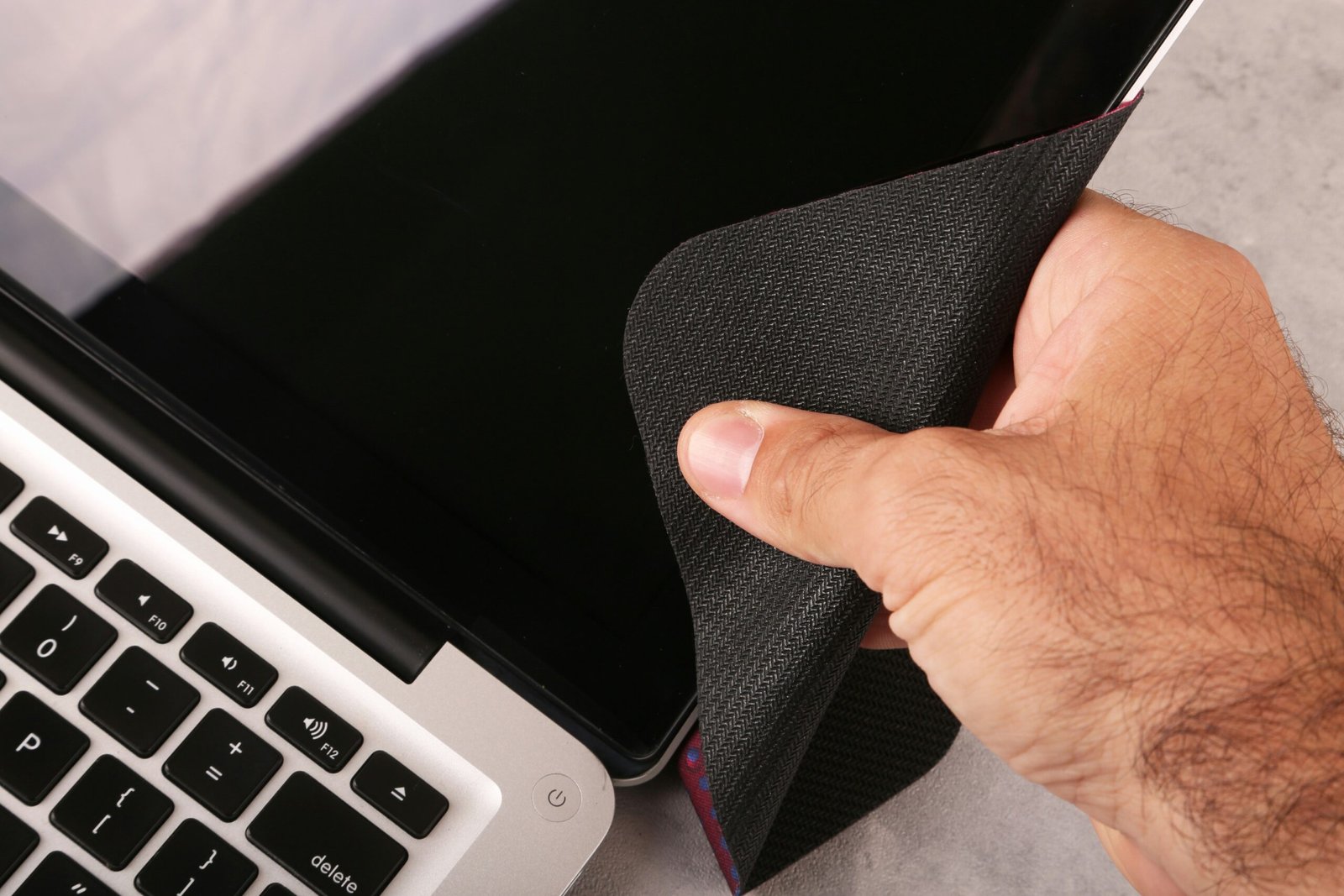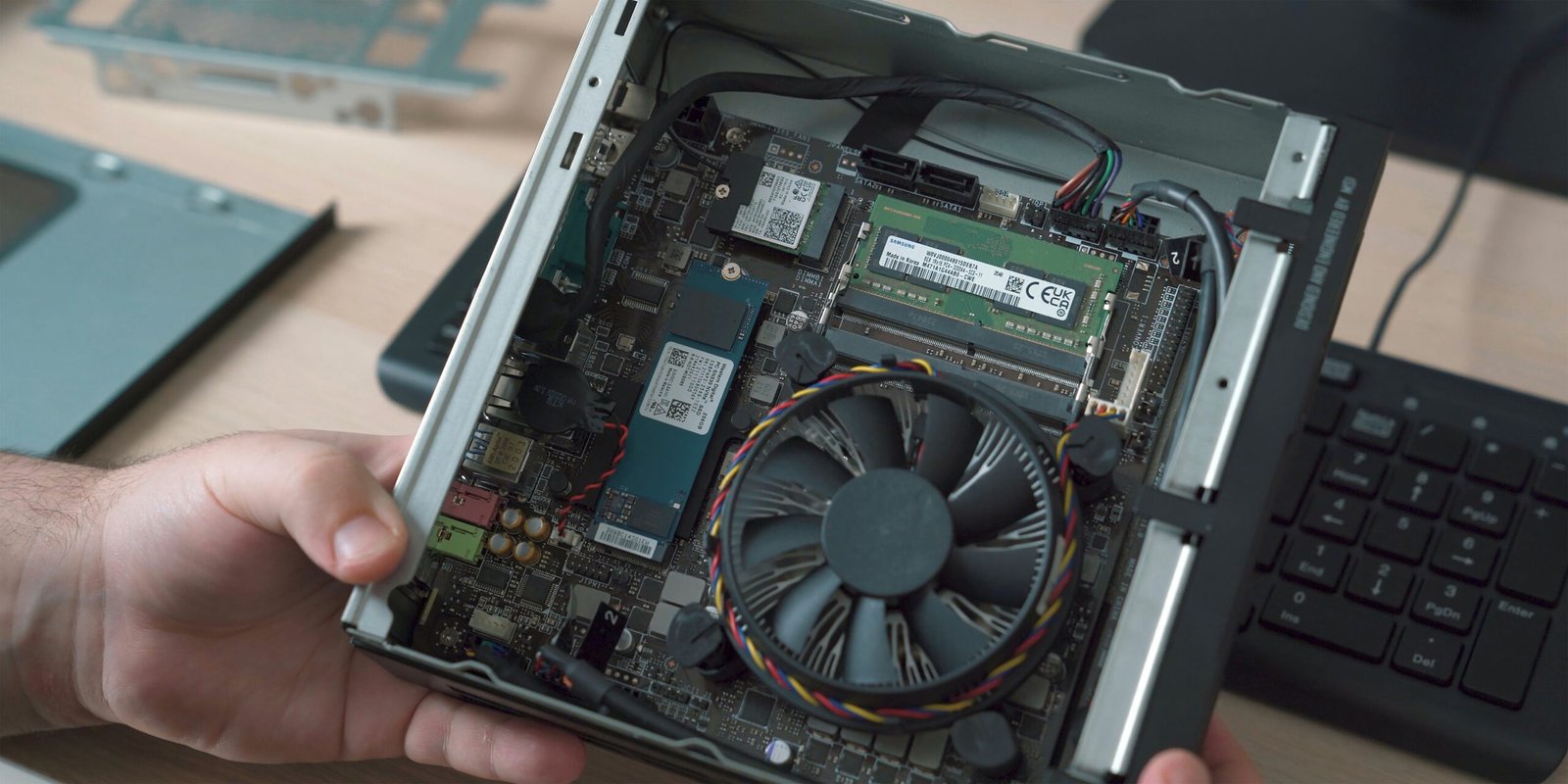Essential Tools for Cell Phone Repair: A Comprehensive Guide
Introduction to Cell Phone Repair Tools
In today’s technology-driven world, the importance of cell phone repair cannot be overstated. As smartphones have become integral to our daily lives, the ability to maintain, fix, and preserve these devices has evolved from a niche skill into an essential service. Whether it is a cracked screen, malfunctioning battery, or other technical glitches, the demand for proficient cell phone repair services continues to surge. This surge brings to light the necessity for specialized tools that ensure repairs are performed not only swiftly but with high precision and reliability.
The realm of cell phone repair is diverse, incorporating a myriad of tools and equipment designed to address a wide range of issues. From basic instruments such as screwdrivers and tweezers to advanced diagnostic tools and software, each tool serves a unique purpose. The effectiveness of these tools is critical in diagnosing problems accurately, performing repairs efficiently, and ultimately extending the lifespan of the device.
This comprehensive guide will detail the essential tools utilized by cell phone repair technicians. Whether you are a novice seeking foundational knowledge or a seasoned professional aiming to expand your toolkit, understanding the variety and application of these tools is fundamental. We will delve into categories such as disassembly tools, diagnostic equipment, soldering devices, and cleaning aids, shedding light on their roles and the nuances of their use.
Through this exploration, readers will gain insight into how the right tools not only simplify the repair process but also enhance the quality and longevity of cell phone repairs. By arming oneself with this knowledge, the overarching goal is to empower readers to approach cell phone repair with greater confidence and skill, ensuring each fix contributes to the optimal functionality of our indispensable gadgets.
Basic Hand Tools
In the realm of cell phone repair, basic hand tools are indispensable for the effective disassembly and handling of delicate components. Among the essential tools, screwdrivers are paramount. A variety of screwdrivers cater to different types of screws used in mobile devices, including Torx, Phillips, and Pentalobe. Torx screwdrivers, distinguished by their star-shaped tips, provide stability and prevent slippage, making them ideal for removing screws found in various smartphones. Phillips screwdrivers, with their cross-shaped heads, are commonly used for numerous tasks, from accessing screws in phone bodies to handling smaller internal components.
Pentalobe screwdrivers deserve a specific mention due to their specialized design. These five-pointed star screwdrivers are particularly necessary for Apple devices, as they secure external cases like iPhone and MacBook shells, offering a blend of security and tamper resistance. Having the correct screwdriver not only ensures efficient repair work but also minimizes the risk of damaging delicate screws and components, which is crucial in maintaining the device’s integrity.
In addition to screwdrivers, tweezers are vital for handling tiny components with precision. Fine-tipped and anti-static tweezers allow technicians to safely manipulate screws, wires, and chips without causing static damage or dropping them. Spudgers and pry tools are instrumental in safely opening devices. These thin, flat instruments can insert between parts of a device to separate screens and panels without scratching or cracking them. Spudgers made from non-conductive materials are particularly useful for working around sensitive electronic parts, reducing the risk of short circuits.
Each of these basic hand tools plays a significant role in enabling meticulous disassembly and reassembly of cell phones, ensuring that repairs are carried out with minimal risk to the tiny, vulnerable components within. Having a comprehensive set of these tools is fundamental for any professional or DIY enthusiast aiming for successful cell phone repair.
Advanced Electronic Repair Tools
When it comes to cell phone repair, the use of advanced electronic tools is essential for diagnosing and fixing complex issues. Precision and safety become paramount as you handle delicate components. One indispensable tool in advanced repairs is the multimeter. This device measures electrical properties like voltage, current, and resistance, allowing for thorough circuit testing. A multimeter’s utility lies in its ability to pinpoint issues within the intricate circuitry of a cell phone, ensuring accurate diagnosis and repair.
Soldering irons are another critical piece of equipment. They are used for reconnecting broken parts, such as when a component needs to be reattached to the circuit board. A soldering iron enables precise application of heat to melt solder, a metal alloy, which then solidifies to form a strong electrical connection. High-quality soldering irons offer adjustable temperature settings, ensuring the right amount of heat is applied to prevent damage to sensitive components.
For even more advanced fixes, hot air rework stations come into play. These tools are essential for reattaching chips and performing delicate surface mount technology (SMT) tasks. Hot air rework stations use a stream of heated air to melt solder on circuit boards, making it possible to remove or reattach components without direct contact. This method reduces the risk of damage and ensures a secure fit for critical elements like microchips.
While advanced electronic repair tools are indispensable, their effectiveness hinges on the user’s understanding and skill. The precision required in handling these devices cannot be overstated. Adequate training or experience is crucial for utilizing tools like multimeters, soldering irons, and hot air rework stations safely and effectively. Always prioritize safety by using appropriate protective gear such as anti-static wristbands and ensuring a well-ventilated workspace to prevent harmful exposure to fumes and electrical hazards.
“`html
Screen Replacement Tools
Replacing a cracked or broken cell phone screen is a common repair task requiring specific tools to ensure both safety and precision. One of the essential tools for this job is the suction cup. Suction cups are used to carefully lift the screen from the phone’s body without causing damage to delicate internal components. They create a vacuum seal on the screen, allowing for easy separation.
Another crucial tool in screen replacement is the screen separator. This tool is designed to gently pry the screen away from the frame. It’s typically a thin, flat piece made of plastic or metal that helps to navigate the tight spaces between the screen and frame. By slowly working the separator around the screen’s edges, technicians can safely remove the screen without chipping or cracking it further.
Adhesive strips are also vital in the screen replacement process. These double-sided sticky tapes are used to secure the new screen in place. It’s important to clean both the phone’s frame and the new screen thoroughly before applying the adhesive, ensuring a firm and lasting bond. Avoiding bubbles and uneven application of the adhesive is crucial for maintaining the phone’s integrity and functionality.
Lastly, UV curing lamps play an important role in the replacement process, particularly for phones with glue-on screens. These lamps are used to cure the liquid adhesive that bonds the new screen to the phone. The UV light speeds up the curing process, ensuring a secure attachment and reducing the risk of the screen lifting or detaching over time. Typically, the curing process involves placing the phone under the UV lamp for a specified period, depending on the adhesive used.
In a step-by-step process, start by turning off the phone and removing any screws that hold the screen in place. Use the suction cup to lift the screen, then insert the screen separator to work around the edges. Carefully remove the old screen, apply the adhesive strips or liquid adhesive, and align the new screen. If using liquid adhesive, cure it with a UV lamp. Finally, reassemble the phone, ensuring all connections are secured.
“““html
Battery Replacement Tools
Replacing a cell phone battery involves a delicate process that requires specialized tools to ensure both the device and the technician are unharmed during the procedure. The essential tools for this task include battery adhesive strips, plastic cards, and heat guns, each serving a specific purpose in the battery replacement process.
Battery adhesive strips are crucial for securing the new battery in place. These strips are designed to attach the battery firmly to the phone’s housing without causing damage when removed. It’s important to use adhesive strips that are specifically designed for mobile devices to ensure proper adhesion and to avoid any unintended residue that could interfere with the device’s functionality.
Plastic cards are indispensable when it comes to prying the old battery away from the phone’s body without damaging any internal components. These cards are typically made of a flexible yet sturdy plastic that can slide between the battery and the housing, gently loosening the adhesive that holds the battery in place. When using plastic cards, it’s essential to apply even pressure and work slowly to avoid puncturing the battery or damaging other parts of the phone.
Heat guns play a pivotal role in softening the adhesive used to secure the battery. By carefully applying heat to the back panel of the phone, the adhesive becomes more pliable, making it easier to remove the battery without applying excessive force. It’s crucial to use the heat gun at a controlled temperature to prevent overheating, which could cause damage to the phone’s internal circuits or the battery itself.
When handling batteries, certain precautions are necessary to ensure safety. Batteries should always be handled with clean, dry hands, and care must be taken to avoid puncturing or bending them, as these actions could release harmful chemicals or even cause a fire. It’s also advisable to work in a well-ventilated area and to use anti-static tools to minimize the risk of short circuits.
Overall, having the appropriate battery replacement tools and knowing the proper techniques can make the task of replacing a cell phone battery both safe and efficient. By following these guidelines, technicians can ensure that the battery replacement process is performed smoothly and without unnecessary complications.
“““html
Diagnostic Tools
In the realm of cell phone repair, diagnostic tools play an indispensable role in identifying and understanding various issues. These tools help technicians pinpoint problems ranging from software glitches to faulty hardware and connectivity complications, ensuring precise and effective repair solutions.
One of the primary diagnostic tools is diagnostic software. This software can run a series of tests on the phone’s hardware and software components, revealing defects that may not be evident otherwise. For example, it can detect issues such as failing sensors, corrupted operating system, or problems with installed applications. Popular diagnostic software includes tools like Phone Doctor Plus and TestM, which provide comprehensive system checks and detailed reports.
Another critical diagnostic tool is the power supply tester. This device checks whether the phone is receiving the correct voltage and current, which is crucial for diagnosing power-related issues. If a phone fails to power on or experiences intermittent power loss, a power supply tester can help determine whether the issue lies within the battery, the charging port, or the internal circuitry.
Thermal cameras are also increasingly being used in cell phone diagnostics. These cameras detect heat patterns within the device, highlighting hotspots that could indicate problematic components. For instance, an overheating processor or a short-circuited part would generate excessive heat, which is easily visualized through a thermal camera. This tool is particularly useful for diagnosing hardware problems without needing to disassemble the entire device.
Common issues such as poor battery life, malfunctioning touchscreens, or connectivity problems (e.g., Wi-Fi or Bluetooth not working) can all be diagnosed with these tools. By leveraging diagnostic software, power supply testers, and thermal cameras, technicians can quickly identify the root cause of an issue, leading to faster and more accurate repairs.
“`
Cleaning and Maintenance Tools
Ensuring a clean workspace and maintaining the longevity of cell phone parts are crucial aspects of cell phone repair. The importance of cleanliness cannot be overstressed, as even the slightest dust or debris can lead to further damage or malfunction. Several essential cleaning and maintenance tools can help you achieve this objective, thereby enhancing the efficiency and quality of your repairs.
One fundamental tool for maintaining a clean workspace is the anti-static brush. These brushes are specifically designed to remove dust and debris from delicate components without causing static damage. The bristles are gentle yet effective, allowing you to clean motherboards, screens, and other sensitive parts safely. Regular use of anti-static brushes can significantly extend the life of the components you are working with.
Compressed air cans are another indispensable tool for any cell phone repair technician. These cans provide a powerful burst of air that can dislodge dust and particles from crevices that are hard to reach with a brush. Compressed air is particularly useful for cleaning connectors, ports, and other areas where dust tends to accumulate over time. However, it is essential to use these cans judiciously to avoid damaging sensitive components with the force of the air.
Cleaning solutions also play a vital role in the maintenance of cell phone parts. Alcohol-based solutions are commonly used to remove oils, grime, and residues from screens and internal components. It’s imperative to use these solutions correctly to avoid any potential damage; applying them with a lint-free cloth ensures that no fibers are left behind, which could cause issues later on.
Lastly, maintaining a clean workspace itself cannot be ignored. Using anti-static mats and wrist straps can help reduce the risk of static electricity affecting your repairs. Keeping the work area free from unnecessary clutter and regularly cleaning the tools and surfaces will create a more efficient and safer repair environment.
In conclusion, the right cleaning and maintenance tools, such as anti-static brushes, compressed air cans, and appropriate cleaning solutions, are essential for any cell phone repair toolkit. They not only help in maintaining a clean workspace but also in ensuring the longevity and proper functioning of the parts being repaired. Investing in these tools is an investment in quality and reliability for your repair services.
Tool Kits and Organization
For anyone involved in cell phone repair, the decision between purchasing comprehensive tool kits or individual tools can significantly impact efficiency and effectiveness. Comprehensive tool kits, often curated by experts, offer a full array of tools required for disassembling, repairing, and reassembling cell phones. These kits typically include a range of screwdrivers, spudgers, tweezers, and other specialty tools tailored to meet the needs of various models and manufacturers. Popular brands like iFixit and Kaisi provide tool kits that have garnered positive reviews from professionals and enthusiasts alike. These kits are designed to be versatile and are built with quality materials to withstand repeated use.
Conversely, individual tools allow professionals the flexibility to handpick and customize their collection based on specific repair needs. Those who adopt this approach can focus on enhancing their setup with superior, single-purpose tools depending on their specialty tasks. Brands like Wiha and Pentalobe offer high-precision screwdrivers and tweezers, which are favored for their durability and precision.
Beyond the selection of tools, the organization is a crucial aspect of efficient cell phone repair work. Effective organization ensures that tools are readily accessible, reducing the time spent searching for the right tool and minimizing the risk of loss or damage. Toolboxes with multiple compartments, magnetic mats, and sorting trays are essential accessories for any repair station. Magnetic mats, such as those from Magnetic Project Mat, not only keep screws and small components securely in place but also allow for easy labeling and tracking during disassembly. Sorting trays, often stackable and configurable, help in categorizing components systematically, enhancing workflow and productivity.
Whether opting for a comprehensive tool kit or selective individual tools, maintaining a well-organized workspace is pivotal. A structured environment facilitates a smooth repair process, ensuring all necessary tools and components are within reach. This not only saves time but also contributes to higher quality repair outcomes, emphasizing the critical role of both tool selection and organization in the field of cell phone repair.
Conclusion and Best Practices
The significance of utilizing the right tools for cell phone repair cannot be understated. Whether you are a novice or an experienced technician, having access to high-quality, precise instruments can greatly enhance the efficiency and accuracy of your repairs. From screwdrivers to multimeters, each tool has a specific role that contributes to the successful disassembly and reassembly of a device.
One of the best practices for cell phone repair is to ensure a clean and organized workspace. This reduces the likelihood of losing small components and allows you to work more efficiently. Additionally, always use anti-static equipment to prevent damage to sensitive electronic parts. Wearing an anti-static wrist strap can further protect the internal components of the phone from electrostatic discharge.
Safety is another critical aspect. Always wear safety glasses to protect your eyes from small shards that might fly off during the repair process. It’s also advisable to power down the device and disconnect the battery before starting any repair work to eliminate the risk of electrical shocks or short circuits.
Regular maintenance of your tools can prolong their lifespan and ensure they function properly. Clean your tools after each use, particularly those that come into direct contact with adhesive substances. Lubricate moving parts, like screwdriver heads, to keep them in optimum condition. Moreover, replacing worn-out or damaged tools in a timely manner can prevent further complications during the repair process.
Incorporating these practices into your repair routine will not only improve the quality of your work but also enhance your overall efficiency and safety. By investing in the right tools and caring for them properly, you can ensure a smoother, more professional repair experience, ultimately leading to greater customer satisfaction and trust in your services.







